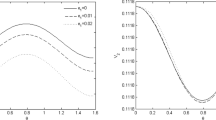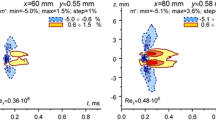Abstract.
Shock reflection phenomena over nonstraight surfaces have been investigated. The models used in this experiment are ordinary circular cylindrical concave and convex wedges and step-like wedges which simulate the former. The step-like wedges were used to investigate the process of reflected-wave formation over circular cylindrical wedges (method of multiple steps). The reflected-wave structure has been photographed with a schlieren apparatus. The formation of the reflected wave over circular cylindrical wedges is physically well understood by comparing it with shock reflection over step-like wedges. In particular, the reason why the reflected wave over a concave circular cylindrical wedge is very weak away from the reflection point is elucidated. Moreover, the structure and the formation mechanism of the so-called transitioned regular reflection (TRR) are illustrated in detail. As a by-product, based on acoustic theory, analytical formulae for the transition wedge angle are found. They are in good agreement with experiments.
Similar content being viewed by others
Author information
Authors and Affiliations
Additional information
Received Received 28 February 1996 / Accepted 7 August 1996
Rights and permissions
About this article
Cite this article
Suzuki, T., Adachi, T. & Kobayashi, S. Nonstationary shock reflection over nonstraight surfaces: an approach with a method of multiple steps. Shock Waves 7, 55–62 (1997). https://doi.org/10.1007/s001930050063
Issue Date:
DOI: https://doi.org/10.1007/s001930050063




